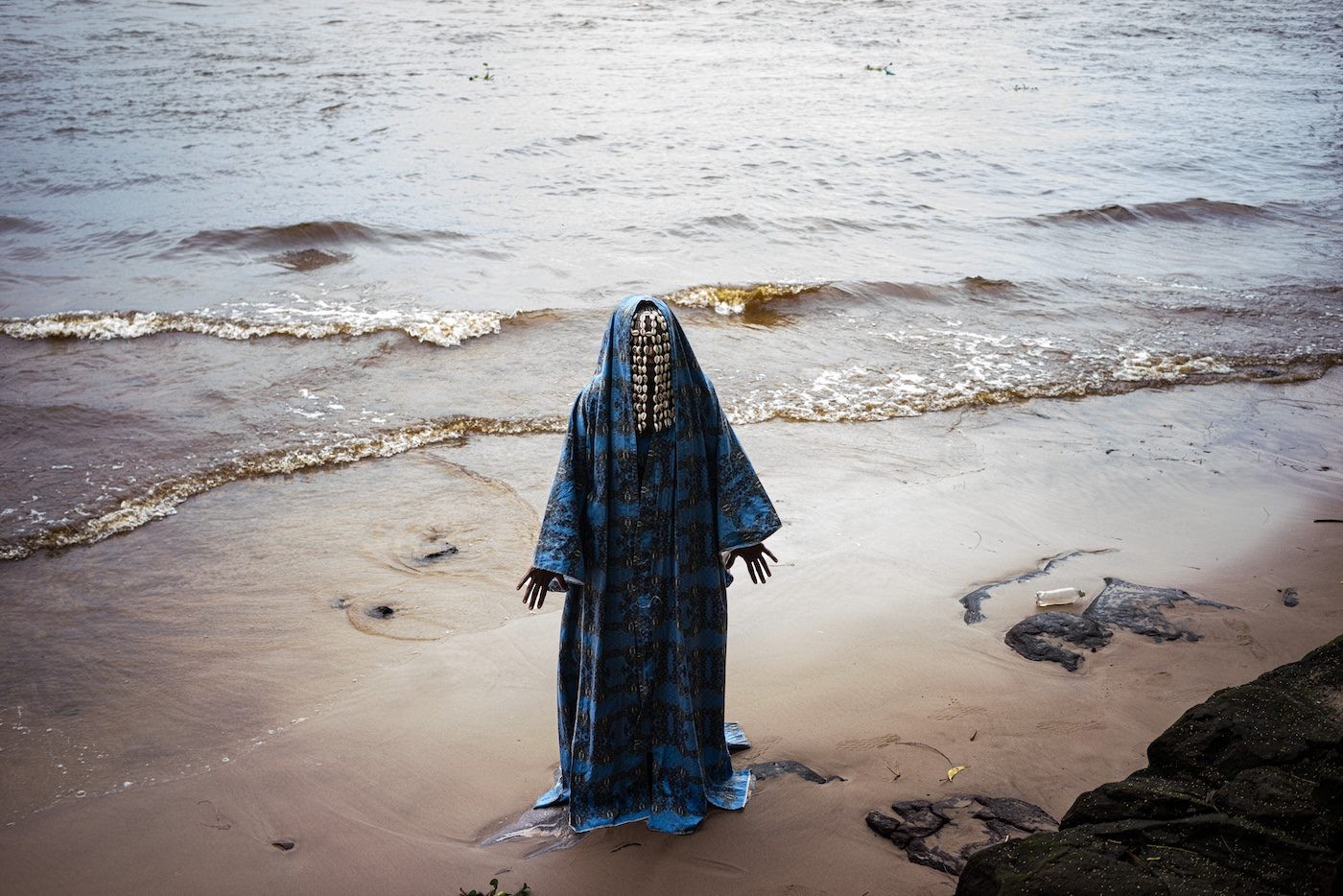Aderemi Adegbite: Embracing Solitude and Empowering Communities
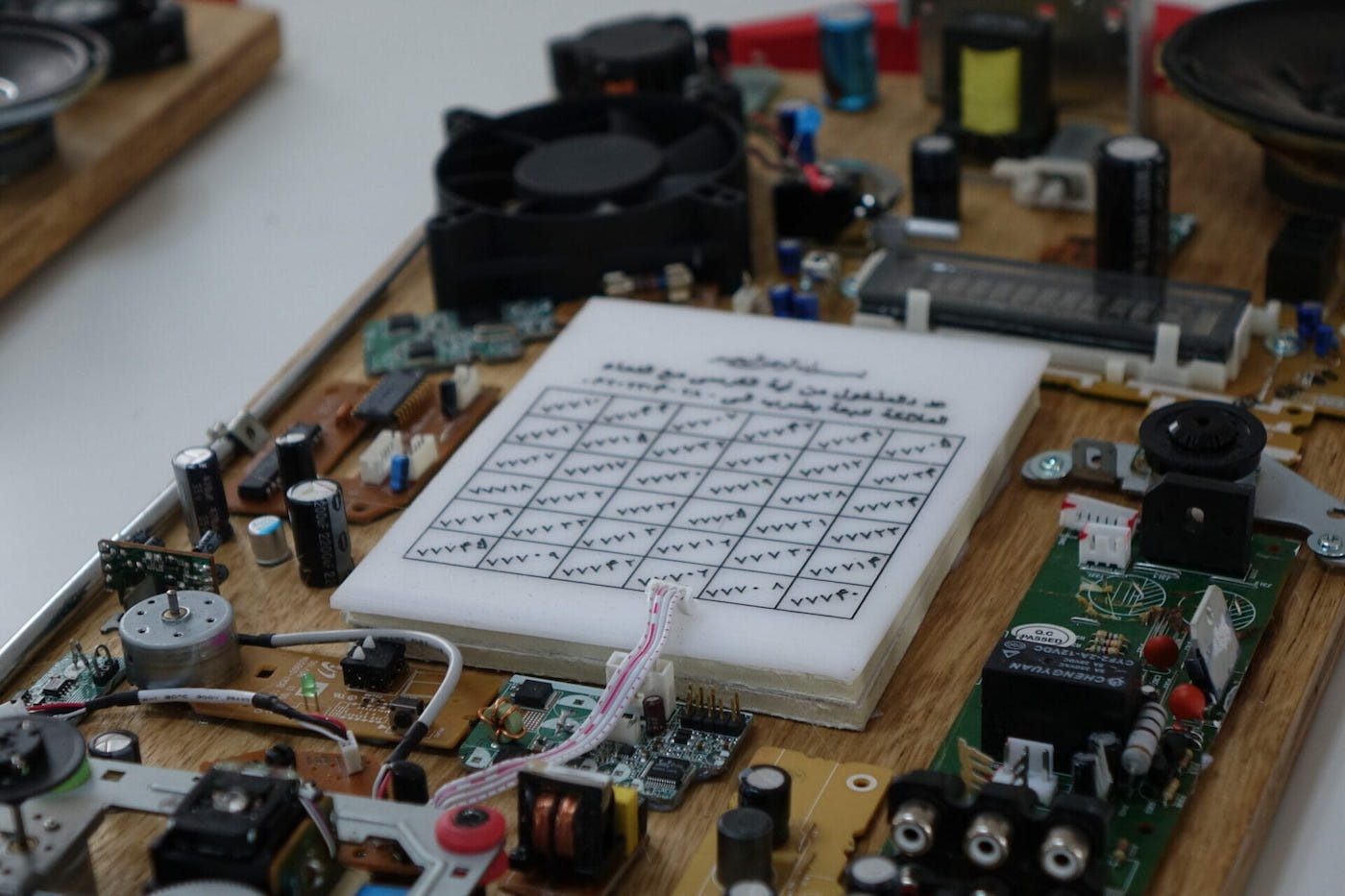
18 October 2023
Magazine C& Magazine
Words Aïcha Diallo
8 min de lecture
Artist-curator Aderemi Adegbite shares his insights on the crucial role of language and culture in our postcolonial moment, and how he uses his influence to challenge the status quo and create platforms for emerging artists in the Nigerian contemporary art scene.
Aïcha Diallo: You are currently artist-in-residence at Akademie Schloss Solitude. Can you tell us about how your experiences and work relate to the program?
Aderemi Adegbite: The experience at Akademie Schloss Solitude has been quite refreshing and eye-opening compared to the residencies I’ve done in previous years. I have realized that the program is about researching my own practice, both theoretically and practically, and to better understand why I do what I do. For instance, I started using the materials I brought from Nigeria differently and started to question myself and my work every day. I’ve been working on two main ideas, and with the two materials textile and electronic waste that I have used here differently. I’m rediscovering these materials, asking myself: Is this necessary? Why do I have to put that material there or this element there? Why is it important? I now see more and more the importance of having time and space to deepen your own artistic practice through in-depth research and how solitude as such has been part of my life as an artist.
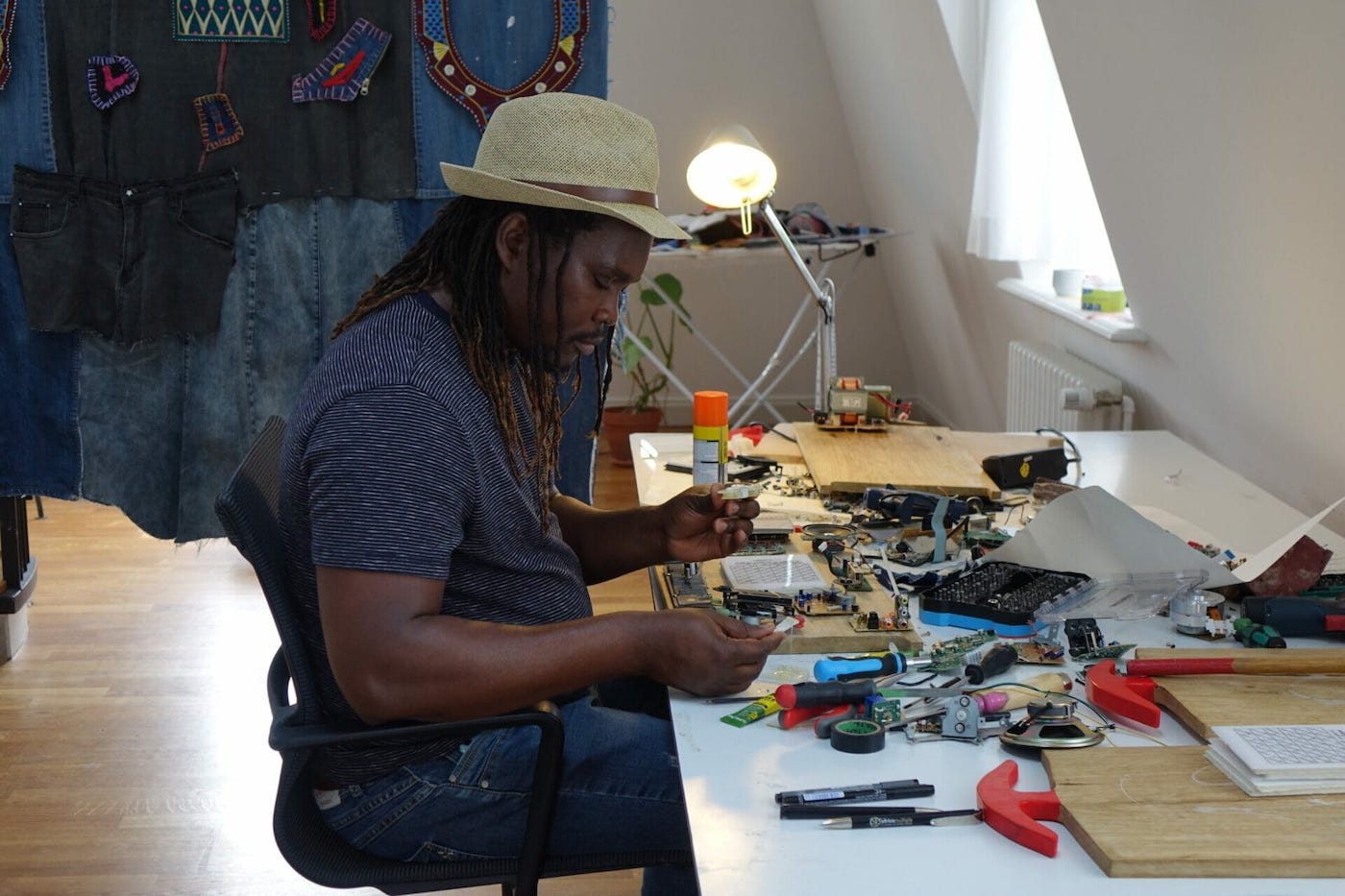
Aderemi Adegbite, Studio Visit, 2023. Foto: Daphne van de Burgwal
AD: You are not only a poet, photographer, and artist-curator, but also creator of a number of cultural platforms. For instance, you recently foundedTutuola Institute in 2020. How did this idea come about?
AA: All my work is intertwined. So yes indeed, Tutuola Institute is the continuation of my work at Vernacular Art Space Laboratory, the community-based art initiative I created in 2016. My aim was to give back to the community through the lens and medium of art. I have traveled around the world to gain exposure to different languages and cultures.
Also, the idea was to generate a space where young people and emerging artists could come together, exchange ideas, create art, and present their work within the community. I chose the name »vernacular« for how it speaks to colonialism and the way it has been used to oppress people’s native languages starting in primary and secondary school levels and the curriculum. I see the importance of language and culture and how they relate to art. The meaning of vernacular goes beyond the language. It is about the culture, tradition of the people, the architecture, and more. For instance, at Vernacular Art Space Laboratory the language of communication is any language that you can speak in Nigeria in order for anyone to be able to communicate their ideas. So the question is more about how to create in an accessible way and how to appreciate art and develop critical thinking.

Kriss Russo, Vernacular Art Space Laboratory, photo: Rapheal
Now the purpose behind my latest platform Tutuola Institute is also about embracing and promoting our own languages and culture by engaging with art and empowering communities. Amos Tutuola was a philosopher and writer in Nigeria whose writings are based partly on Yoruba folk tales. That resonates with my own story and purpose. I founded and inaugurated Tutuola Institute as the first Nigerian Cultural Institute of Yoruba Culture in the framework of the project White Money. This project was produced by the performance initiative Flinn Works in collaboration with six international South-South artists by investigating the theme of arts funding bodies in Europe in relation to global inequalities and racist and neocolonial structures. With these ideas in mind, I created Tutuola Institute both as an artistic intervention as well as a registered institute. In my opinion, this can only be made tangible through cultural relations and the creation of independent cultural spaces.

Aderemi Adegbite in his studio at Akademie Schloss Solitude, working on a new series that re-appropriates the idea around Gelede, a masquerade performance in the Yoruba community, 2023, photo: Daphne van de Burgwal.
AD: That’s fascinating how you bring interdependent ideas about time and space together. Tell us more about theIwaya Community Art Biennial that you also created.
AA: Iwaya Community Art Biennal (ICAF) is a public art platform that gives agency to the inhabitants. Iwaya is the community in Lagos in which I was born and raised. It is one of the suburbs of Lagos’s mainland. The community has changed ever since, as the use of drugs and criminal acts now prevail in this urban space that used to be safe and peaceful during my childhood.
The idea is for us to bring art to the streets as an alternative to crime within the community. At the first edition of the festival in 2016, we exhibited photography and video art in the public space. In 2017, we decided to take it to the next level by inviting both local and international artists to do a one-month residency within the community and create work or generate artistic idea to be presented during the festival. In the following years, we included more artistic genres like painting, performance art, or dance.
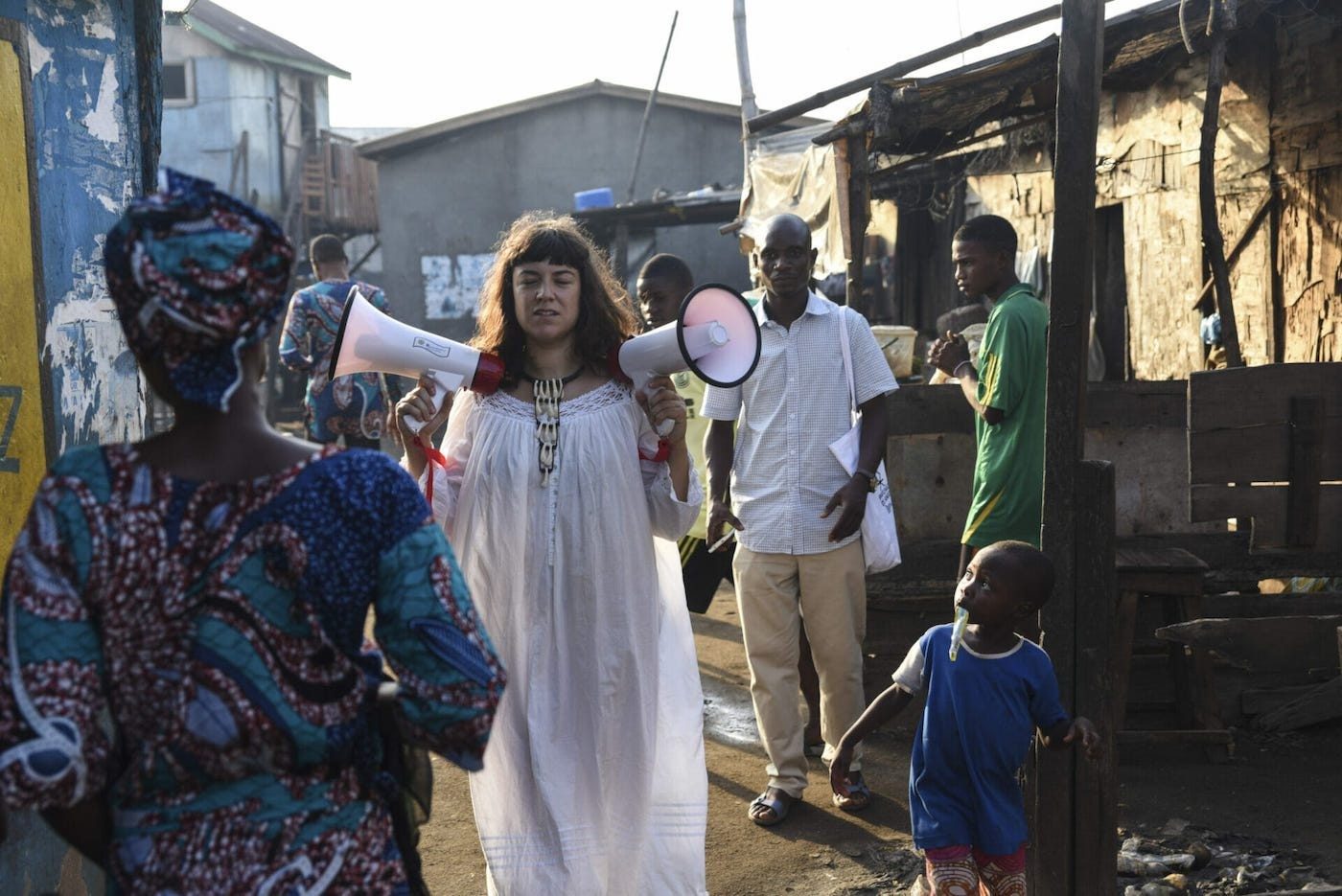
Rita GT, »Oyinbo«, performance at ICAF Lagos, 2017.
AD: So Iwaya Community Art Biennal materializes in the public sphere of Lagos. How can public art be used to build communities and create interventions in the city?
AA: Yes, that is a recurring question in the making of the Iwaya Community Art Biennal. For instance, I curated the 2018 edition, titled »Communal Re-Imagination,« with the architect Ayo Arigbabu. We brought in the architectural dimension to see and experiment with the inhabitants and imagine their urban space: What does it mean to live within a particular space? How do we interact with one another in that space? How can the space be reinterpreted through art? The people in Iwaya started addressing their ideas and questions toward us ever since. There is a sense that a barrier, a wall between the inhabitants and us, artists, and curators, has come down to some extent. The collective conversations have been very stimulating and helps us to generate further ideas for the next editions of Iwala Community Art Biennal. It is truly a process of co-creation and a sense of agency with different people and stakeholders in the community, in Lagos, and in the international contemporary art scene.
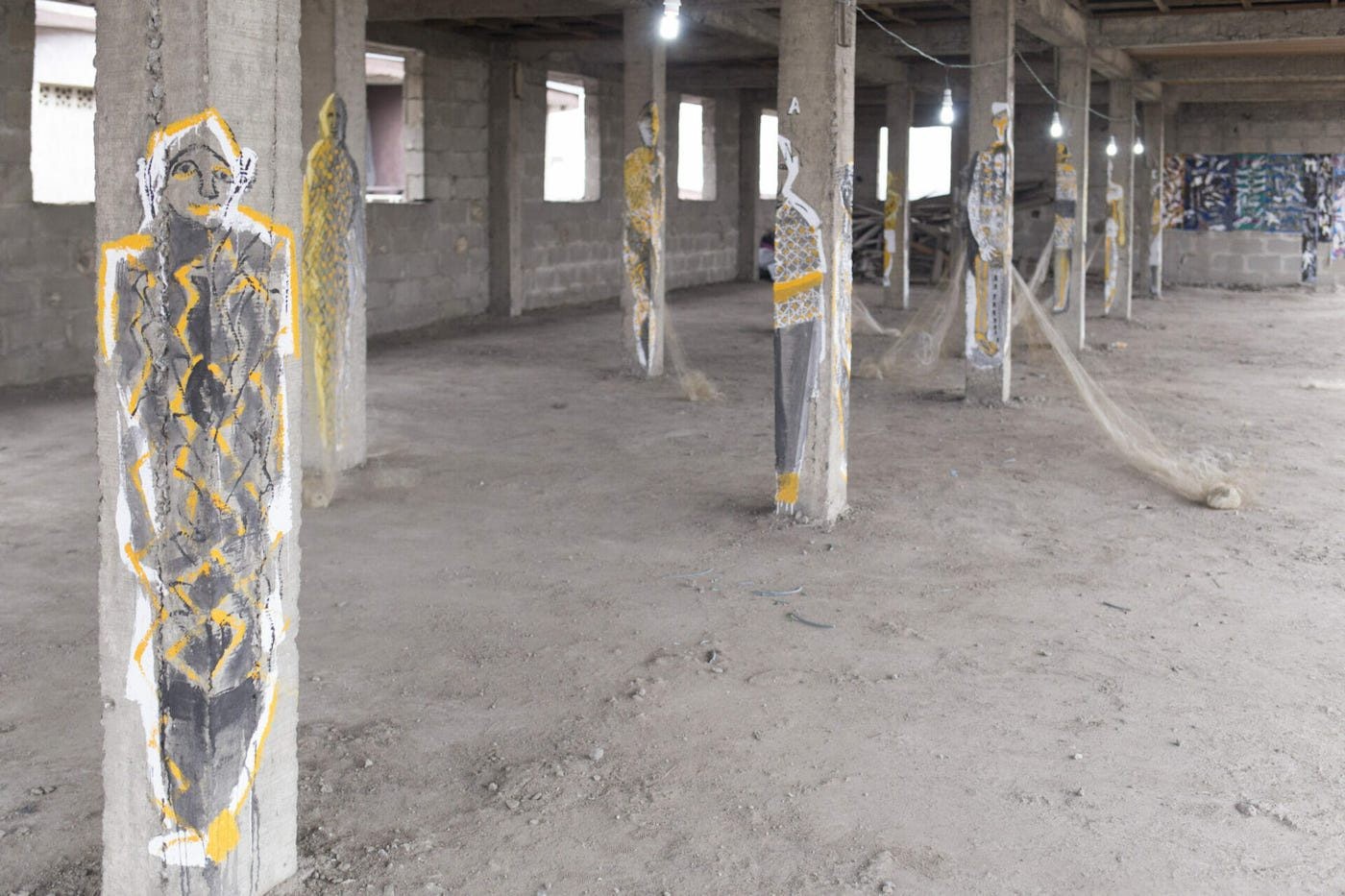
Nameer David, Vernacular Art Space Laboratory, photo: Rapheal
AD: Going back to your own artistic practice, what work are you currently focusing on?
AA: During my artist-residency, I have worked on two main ideas. My new series with the Islamic slates, Al-Shaafi (The Healer), reflects on the disconnection of the spiritual self from the physical self. The point of departure for this series is non-faith affiliation that is on the rampage and emphasized materialism, a byproduct of depersonalization disorder, which is a disconnection of mind and body. Al-Shaafi foregrounds the illusion of progress and success, which in turn leads to a »transient/ephemerality disorder.« As a symbol of disconnection, I use electronic waste as the main component of the assemblage, which shows redundancy and is mounted around numerological calculations for spiritual purification engraved on plastic, which is displayed at the center of the slate as a space of knowledge and spirituality. It represents order, harmony, and peace as a way of bringing healing for this kind of inner and outer fragmentation.
My second new work series re-appropriates the idea around Gelede, a masquerade performance in the Yoruba community and the importance of celebrating women in Yoruba mythology. I experienced some changes in my life and that prompted me to find ways to celebrate women. Gelede uses textile assemblage.
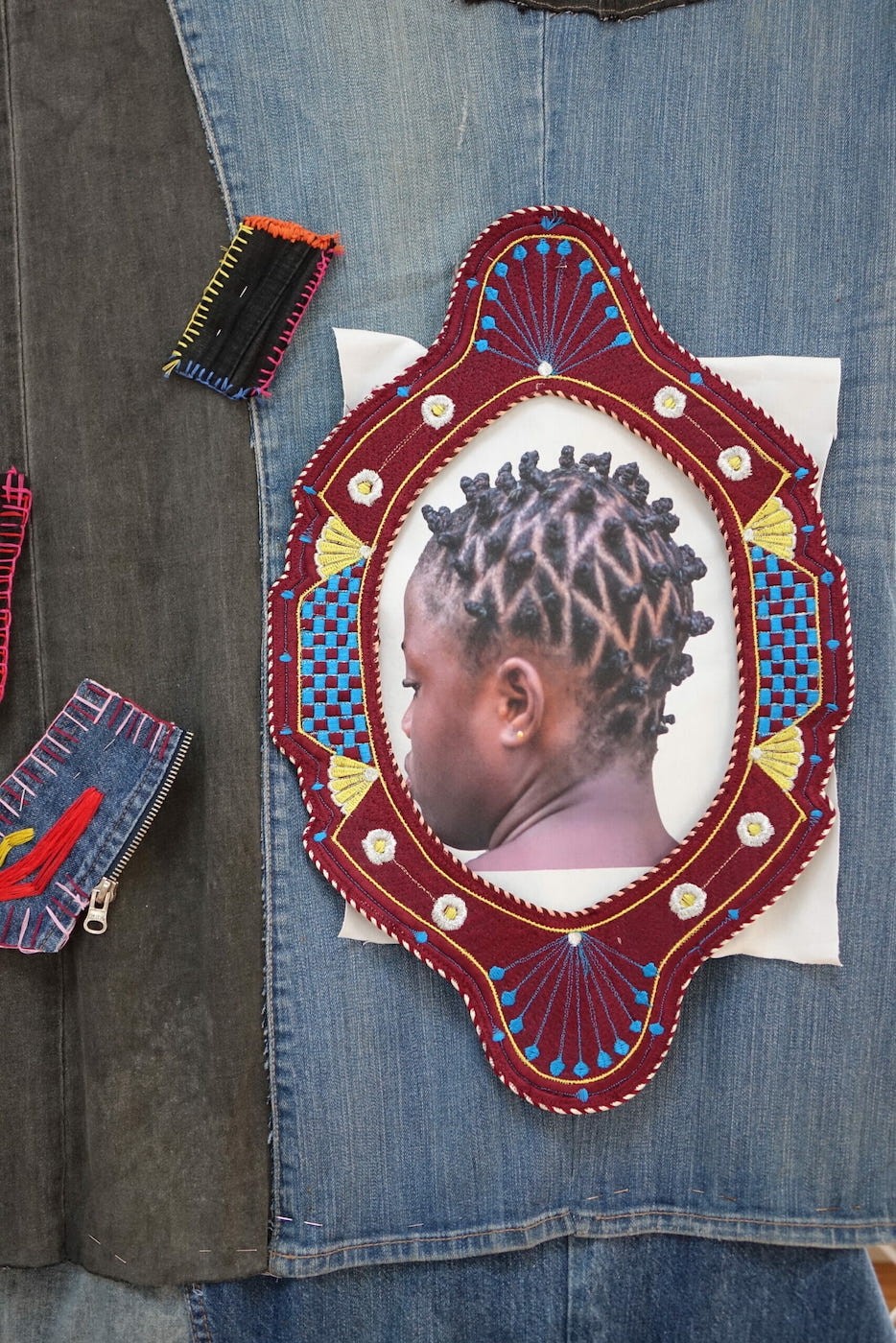
Aderemi Adegbite, from the series »Gelede«, 2023, photo: Daphne van de Burgwal.
The outbreak of Covid-19 gave me time to review my wardrobe. As I sorted through my worn and torn denim trousers, I decided to engage in a conversation with the material. The first two upcycled works I created with the personally used denim were titled Wónyòsi 1& 2. They combine materials such as jeans, clothing labels, embroidery, and the appropriation of popular music, street lingo, and portraiture, all together showing my interest in multi-media artworks.
Gelede departs from the ritual celebration of Iya Nla, old wise women, the guardians of morality and spirituality, to a veneration of women as the conscience of the Yoruba society. In the context of this work, Gelede as a title is used to affirm the Yoruba people’s reverence for female energy expressed through a collage of textile (denim) material, text that refers to the essence of female energy, and images framed with popular embroidery designs used for female and male dresses.
Aïcha Diallo is a writer, educator, curator, and scholar. She was managing editor of Contemporary And (C&) and is co-editor of the anthology Untie to Tie: Colonial Fragments in School Contexts.
This interview was initially published onakademie-solitude.de on August 14, 2023.
Plus d'articles de






